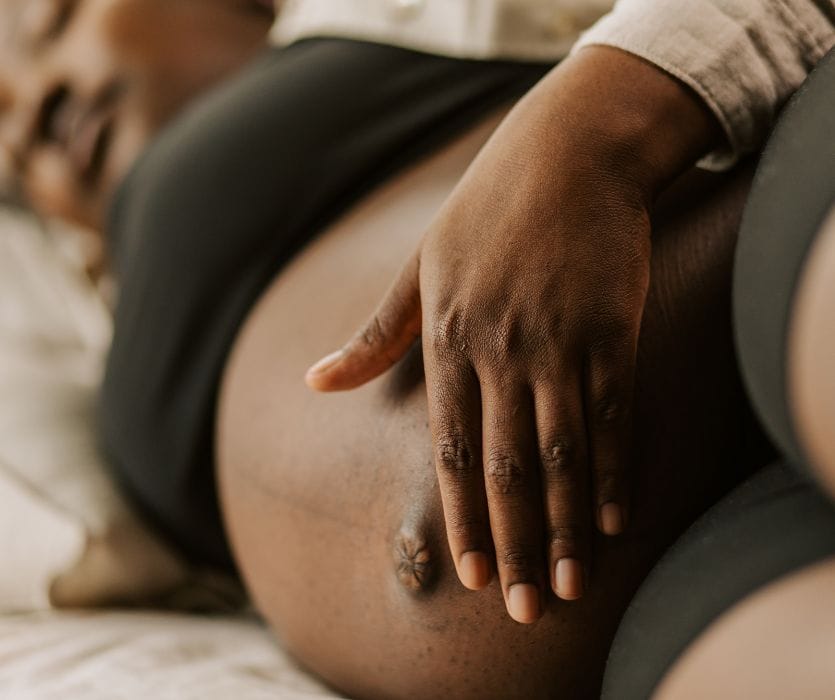Because pregnancy is just one glamorous surprise after another, there are a few factors that could be causing wetness in your underwear during your third trimester. Most of the time this experience is completely normal and harmless. But if you’re reading this, you may be questioning if what you’re experiencing is urine, discharge or amniotic fluid.
In my experience, it was indeed amniotic fluid, and I barely made it to the hospital in time for delivery.
Here's a list of ways to help figure out what's causing the wetness, all done from the comfort of your home - but no matter what, be sure to loop your care provider in with a quick call if you have any doubts.
1. Give it a Sniff
Finally, that super human sense of smell during pregnancy will come in handy. Urine has a strong odor, so get those panties up to your face and have a sniff. If your wet panties smell like pee, you’ve got your answer. If they’re odorless, it could be amniotic fluid or discharge.
Most of the time, it’s only urine leaking. All that pressure your little one is putting on your bladder can cause many mini accidents throughout the day. Sometimes we don’t even feel it coming, but, oh, there it is anyway.
You’ll pee yourself when you cough, sneeze, laugh, stand up, blink…pretty much anything can trigger a trickle of urine. It’s not pleasant, but is a completely normal part of pregnancy, especially near the end of your third trimester.
2. Check the Consistency
Is what’s in your underwear thin and watery or something thicker? If it’s odorless but watery, there’s a good chance it’s amniotic fluid. If it looks like you’ve just used your panties to blow your nose, discharge is probably the culprit.
Discharge is another lovely common side effect of pregnancy. It can sometimes be watery, creating confusion as to what it really is. Usually though, you’ll be able to distinguish discharge from amniotic fluid by consistency. It tends to have a snot-like texture. But if you’re still not sure, there’s one more test you can do at home.
3. Put on a Maxi Pad
Change into a fresh pair of underwear and put on a maxi pad. I know one of the perks of pregnancy is not having to wear these, but I promise it’s a short test.
You’ll need to lay down for an hour or so. It’s very important for this test to follow this rule. No sitting up or walking around allowed. Both discharge and urine can trickle out with gravity. Amniotic fluid will keep coming regardless of your position.
If the maxi pad is dry at the end of the hour, you know it was probably just urine or discharge. But hey, at least your panties won’t get peed in again when you stand back up. If it’s wet, it’s very likely you’ve been leaking amniotic fluid, and you’ll need to go in and have it checked out.
4. Call Maternity and Head On In
You’ll want to call your labor and delivery nurse before you head in. Give them the heads up on what’s been happening and for how long. This way, they’ll be able to prepare for your arrival. No need to wait in the ER when you can skip the line and be escorted like the VIP you are.
It’s very important to be seen even if you’re not completely convinced it is actually amniotic fluid. Your doctor may want to restrict certain activities because there is a risk of infection to the baby once your water breaks.
Have someone else drive you if possible. You don’t want to end up in labor while you’re behind the wheel. There’s no need to be embarrassed if it was just urine or discharge. The nurses are used to false alarms... and urine. In that line of work, getting peed on is just another day at the office. So don’t sweat it if it turns out you’ve been peeing yourself. It’s always better to play it safe, and you’ll finally have the peace of mind to relax and enjoy the rest of your time before the baby comes.
Important Note
Don’t be fooled into thinking it can’t be amniotic fluid just because it’s not a huge gush of liquid. It can trickle out very slowly, sometimes only a small amount at a time. If the baby’s head is in the right position, it can create a seal over the cervix. So you’ll trickle, stop, trickle stop and the cycle continues. Ever get desperate and push a cork into a wine bottle and then try to pour a glass? That’s exactly what it’s like.
It took me a week of that trickle stop cycle and about 40 pairs of panties before I finally went in to have it checked. I barely made it to the hospital. I was 8–9 cm before they were able to give me an epidural. The anesthesiologist barely made it in time.
Did you have trouble telling if your water had broken or was it obvious?
We'd love to know what your experience was like in the comments below.
Our next reco: Easiest Birth Ever: A True Story




Leave a Comment